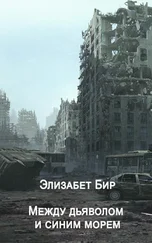Neither would lack of gravity on the way back to Core General. And they could survive the transition from the former to the latter unrestrained except for their acceleration couches, which they were conveniently already slumped upon.
“All right, I think this is a go,” I told Sally, staggering onto the bridge with one hand braced on the wall. We were back to maintaining position over Afar, whipping around the rolling wheel of the generation ship on a following curve, and pulling some extra g because of it. Sally’s rotation meant that we endured successive waves of feeling lighter and heavier as the accelerations interacted. It was profoundly disorienting, but if Sally had stopped her rotation, anybody on the other side of the hub would have been sitting on the ceiling. Awkward.
Loese was sensibly strapped into her chair, both sets of hands buried in her console. I popped myself down next to her. We watched a stabilized screen rather than trying to follow the action through a viewport, which would have been nauseating—as I’d learned before my last jump.
I was already doing enough tuning to compensate for my inner ear’s opinions about the vector situation without compounding the problem, thanks.
Tsosie and Rhym were strapped in to watch the show, as well. I clicked my own belts into place and lay back on the acceleration couch with a sigh.
It helped.
“All right,” Sally said. “I have control of Afar’s nav systems. Here goes nothing.”
Nothing on the bridge changed, at first. The swelling waves of acceleration washed us; Afar clung like a barnacle to the vast curve of the generation ship. Then a seam appeared in the adaptive collar that held him to the airlock. It peeled away and vanished back into Afar’s hull. In the normal course of events, the materials would have been salvaged for printing into another tool as necessary. I wondered, with the ship and crew disabled, if it would be cluttering up the airlock like a giant pile of parachute cloth when I went in.
Because of the collar mismatch, Afar had not shot his docking bolts. He clung to the outside of the generation ship with emergency grapples, and because the airlock had not been seated to Big Rock Candy Mountain , there was no puff of escaping atmosphere.
Afar retracted his grapples evenly and instantly shot free of the generation ship, no longer bent to her curve but not deprived of velocity. He vectored off as fast as he had been spinning. The pings of one of the two distress beacons went with him.
We followed, the swell and release of acceleration replaced by a pressure that would have leaned us aft if we hadn’t been strapped down.
I rubbed my hands. All the liquid inside me was sloshing around, and my joints had opinions about it.
Localized pain, you can tune out pretty safely and easily, up to a point. The systemic stuff is harder to manage without numbing your entire body or getting stoned enough on your own endorphins to alter your judgment more than might be wise when you’re about to do something as finicky as a solo rescue mission in a profoundly hostile environment. I could push some anti-inflammatories, though, so I fumbled them out of my breast pocket and dry-swallowed them. The rest of the pain… it was just pain. I didn’t like it, but it wouldn’t stop me from doing my job.
Tsosie noticed. He caught my eye, but he didn’t say anything. Just as well, as it saved me having to invoke privacy, or bite. Metaphorically speaking. Biting a colleague is probably grounds for dismissal, even—especially?—in a massively multispecies, massively multicultural work environment.
We bore down on Afar with all the majestically slow urgency of space rescues, accelerating to close the distance between us and match his trajectory. He wasn’t gaining velocity, so we didn’t have to burn hard after him. Big Rock Candy Mountain receded in our aft screens. My heart sped with the excitement of the chase.
I hoped Helen was all right.
The lack of anything else productive to do griped me, in my adrenalized state. “I’m going to hail them.”
Tsosie grunted assent. Technically I didn’t need his permission for this, and I had not asked for it: I was the rescue specialist. But I didn’t point that out to him, because I am reliably informed that part of being a successful team involves making allowances. And observing the niceties of interpersonal politics. And sending thank-you notes and such.
“Sally, patch me through, please?”
There was a snap of connection. No crackle of old-fashioned static this time. Sally had given me a tightbeam laser cluster.
“Synarche Packet Vessel I Bring Tidings From Afar , this is the Core General–affiliated Synarche Medical Vessel I Race To Seek the Living . I am her rescue coordination specialist, Dr. Brookllyn Jens. We are responding to your distress signal. Do you copy?”
Silence followed. I had a weird sense of someone listening, but if there was, they didn’t speak. Most of those spooky experiences are just your tempoparietal junction getting confused.
“Afar, please acknowledge if you can hear me. We’re requesting permission to board in response to your beacon.”
My fox—and the AI or the fox of the person on the other end—would handle any necessary translation through our senso. Assuming there was anybody listening. The connection stayed live—Afar was receiving us—but there was no response.
I hadn’t actually expected one. But now we could check the box on the paperwork about asking politely before we broke in.
Tsosie was shaking his head at me before I gave up. I didn’t cut the connection. There was no reason to, and if somebody over on Afar woke up, made it to a com, and sent a signal we’d know immediately. Anyway, being a rescue vessel, we had the override codes for their drives. And now that Sally had formalized her link to him, she could start turning Afar in a more useful direction. For example, back toward Core Gen. This would take us away from Big Rock Candy Mountain , but we weren’t going back to her anyway, and other ships were inbound to continue her evacuation.
We wouldn’t want to brake Afar unless we had to. That v was useful, and if we had to dump it, it would take us a while to get it back.
But since we couldn’t raise him, I was going to have to go over there and make sure that the crew had what they needed to stay alive until we got them back to Core General. That meant I needed to don not just my standard hardsuit, but a heavy-duty, thermally protective suit that did not radiate any heat whatsoever. My goal was to avoid melting my hosts in addition to keeping myself from freezing into a curiously complex rock.
“Ceasing rotation,” Sally said. “We’re nearly in range for your jump.”
We weren’t accelerating anymore. As Sally’s rotation slowed, I felt myself drifting up against the acceleration couch straps.
“Sally.” I unbuckled and propelled myself toward the gangway down to Medical. “Line me up… oh, make it three cold-zone drones. The ones that are safe to use around methane breathers. And the cold-zone hardsuit.”
“The drones are still over there,” she said. “We’ll be matched in about six minutes.”
It wasn’t a very long gangway. A meter at most; more of a narrow spot to make space for storage lockers and a decompression door. My ayatana passengers flinched from the soft surfaces of the walls, the glow of the corridor lights. The squishy bodies of Loese and Tsosie.
I tried not to look at my own aching hands. Instead, I directed my attention toward the cold, clean white surfaces of the operating theater. It was the least revolting thing I could see, even though to the human side of my current blend of personalities it looked like a torture chamber. There’s a lot of plexiglass shielding it from the rest of Medical, because blood—or ichor, or whatever—splatter in microgravity or under maneuvers is nobody’s idea of a good time. And the operating frame has a lot of weird-looking restraints on it, because not everybody’s limbs are the same size, shape, or arranged in the same order.
Читать дальше












